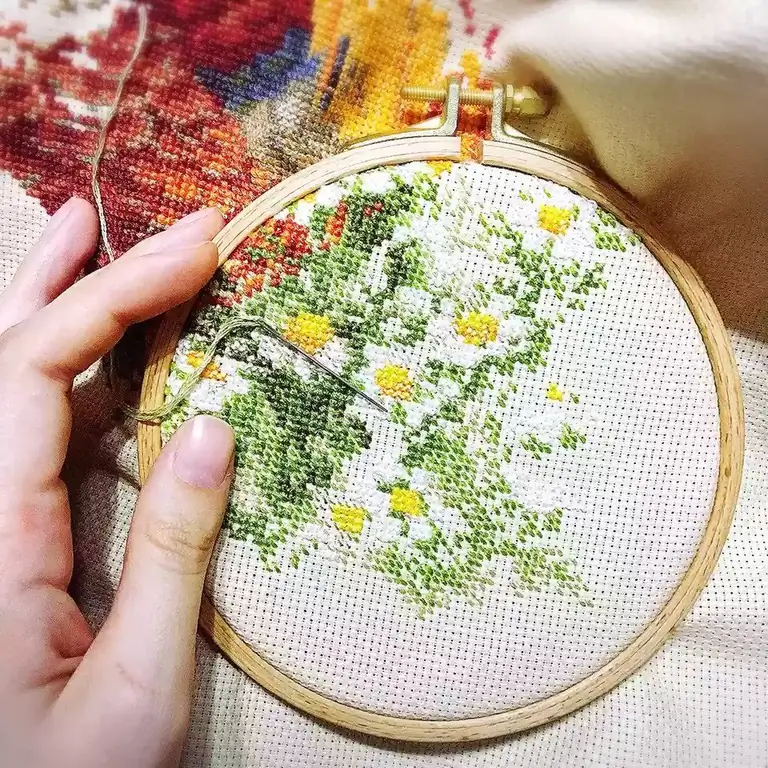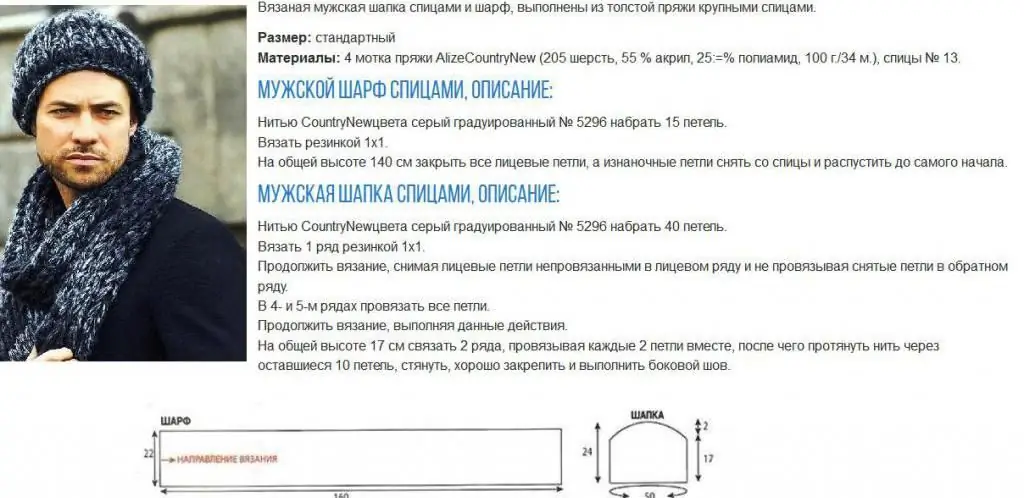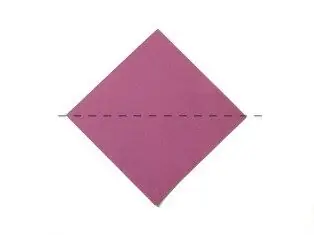
Inhaltsverzeichnis:
- Autor Sierra Becker [email protected].
- Public 2024-02-26 04:43.
- Zuletzt bearbeitet 2025-06-01 05:43.
Barett ist die beliebteste Kopfbedeckung. Vom Mittel alter bis zur Gegenwart war es Teil der Militäruniform. In Spanien gilt die Baskenmütze als nationaler Kopfschmuck der Basken.

Heute ist die Baskenmütze auch eine beliebte Kopfbedeckung für Vertreter kreativer Berufe sowie ein modisches Accessoire für Stilkenner. Die Baskenmütze passt zu jedem Outfit - zur Jeans und zum Kleid. Es ist universell für jede Jahreszeit - es sieht sowohl im Winter als auch im Sommer natürlich aus.
Strickmützen
Dieser Hut lässt sich leicht mit den eigenen Händen herstellen. Ein interessantes Thema sind gestrickte Baskenmützen. Es gibt verschiedene Arten des Strickens. Sie können separate Keile erstellen und sie dann zusammennähen, Sie können auf mehreren Stricknadeln im Kreis stricken, Sie können Baskenmützen mit Stricknadeln an einer Angelschnur herstellen. Betrachten Sie die Optionen zum Stricken mit zwei Stricknadeln an einer Angelschnur.
Von oben nach unten gestrickte Baskenmützen
5-7 M anschlagen. Erste Reihe - 1 Umschlag wiederholen, 1 Masche rechts. Die zweite Reihe und alle geraden - die Maschen werden einfach nach Muster gestrickt. Die dritte Reihe ist die gleiche wie die erste. Vierte Reihe - Teilen Sie alle Schleifen in 6 Keile und trennen Sie sie mit einem roten Faden. Wir fangen an, die Keile zu erweitern. Wir häkeln auf beiden Seiten des roten Fadens hineinvordere Reihe 3 mal, dann in jeder dritten vorderen Reihe 6 mal. Wenn der Boden den gewünschten Durchmesser hat, beginnen wir, die Schlaufen zu reduzieren. In der ersten Reihe reduzieren wir die Schlaufen gleichmäßig auf einen Betrag, der dem Kopfumfang entspricht. Dann wird es mit einem Gummiband ca. 5 cm gestrickt.

Baskenmützen von unten nach oben gestrickt
Dies ist die bequemste Art, eine Mütze zu stricken. Normalerweise werden Mützen so gestrickt. Auf diese Weise ist es einfacher, Baskenmützen zu stricken, da Sie ein unfertiges Produkt anprobieren und alle Mängel beheben können. Um sich nicht in der Größe zu verwechseln, muss ein Muster mit einer Strickdichte von 5-7 cm Länge gestrickt werden. Berechnen Sie, wie viele Maschen pro 1 cm passen. Nachdem Sie das Volumen des Kopfes gemessen haben, ziehen Sie 2 cm zum Dehnen ab und multiplizieren Sie es mit der Anzahl der Strickdichten. Wir sammeln die resultierende Anzahl von Maschen auf den Stricknadeln und stricken die Seite der Baskenmütze. Das optimale Muster ist ein 1x1 Gummiband. Aber auch andere Optionen sind möglich - ein breites Gummiband, Krausrippen. Die Seitenhöhe beträgt mindestens 3 cm.

Jetzt beginne Loops hinzuzufügen. Bestimmen Sie den gewünschten Umfang der Baskenmütze in cm, zählen Sie die Anzahl der Schlaufen. Von diesem Wert ziehen wir die Anzahl der bereits auf die Stricknadeln gegossenen Maschen ab. Das Ergebnis bedeutet, dass Sie beim Stricken so viele Maschen gleichmäßig hinzufügen müssen. Dies kann mit einer Häkel- oder Strickmasche ein zweites Mal hinter einer anderen Wand erfolgen, ohne sie von der Stricknadel zu entfernen. Wenn Sie weiterhin mit einem englischen Gummiband stricken, müssen Sie keine Schlaufen hinzufügen. Wir stricken die Höhe der Baskenmütze mit dem ausgewählten Muster (10-12 cm). Dann beginnen wir mit dem Abstieg zum Boden der Baskenmütze. Wir schneiden die Schleifen zuerst durch 20 Schleifen,Alle 20 und 21 Maschen zusammenstricken. Wir stricken die linke Reihe ohne Schnitte. In der nächsten Vorderreihe wird die zuvor aus 2 Maschen erh altene Masche mit der nächsten zusammengestrickt. Wir stricken auf diese Weise, bis so viele Maschen übrig sind, dass sie mit einem hindurchgezogenen Faden zusammengezogen werden können. Ziehen Sie den Faden fest und verknoten Sie ihn. Wir nähen das Produkt auf der Rückseite. Gestrickte Baskenmützen werden traditionell mit einer Quaste oder einem Bommel oben verziert.
Empfohlen:
Kreuzstich-Gänseblümchen: Schemata und Tipps für Anfänger

Gezählter Kreuzstich gibt es schon seit Jahrhunderten und ist immer noch eine der einfachsten Möglichkeiten, um mit dieser Art von Handarbeiten anzufangen. Mit diesen einfachen Fähigkeiten können Sie echte Gemälde erstellen, ohne ein Künstler zu sein. Wenn Sie zum ersten Mal in die Welt des Kreuzstichs einsteigen, müssen Sie die Grundlagen kennen. Du kannst sie sehr schnell lernen
Diamantstickerei: Anleitung für Anfänger, Technik, Tipps, Tricks, Kits

In letzter Zeit ist Rautenstickerei besonders beliebt bei Nadelfrauen. Die in dieser Technik geschaffenen Werke verblüffen die Fantasie mit der Raffinesse und Anmut der Linien, erfreuen sich an dem großartigen Lichtspiel. Die Gemälde sehen aus wie ein echtes Juwel. Jeder kann sich an dieser Kunst versuchen. Die Technologie zum Zusammenbau einer Diamantplatte ist im Vergleich zu anderen Arten von Handarbeiten einfach. Die detaillierten Anweisungen im Artikel helfen Ihnen dabei, ein Meisterwerk mit Ihren eigenen Händen zu erstellen
Strickmützen für Männer mit Beschreibung

Bei k altem Wetter barhäuptig zu gehen ist gesundheitsschädlich, weil Meningitis nicht schläft. Wenn Sie sich also nicht nur um Ihre Gesundheit, sondern auch um die Gesundheit Ihres Mannes kümmern, sollten Sie unbedingt eine stilvolle Mütze für ihn stricken. Das von Ihnen persönlich erstellte Produkt ermöglicht es nicht nur, das Budget zu sparen, sondern auch ein Accessoire zu finden, das ideal zur Garderobe Ihrer Liebsten passt. Und außerdem wärmt es wie nichts anderes einen geliebten Menschen in der Kälte. Hast du dich entschieden? Dann beginnen wir mit dem Stricken einer Herrenmütze mit Stricknadeln
Papier-Origami: Schemata für Anfänger. Origami: Farbschemata. Origami für Anfänger: Blume

Heute ist die alte japanische Kunst des Origami auf der ganzen Welt bekannt. Seine Wurzeln reichen bis in die Antike zurück, und die Geschichte der Technik zur Herstellung von Papierfiguren reicht mehrere tausend Jahre zurück. Überlegen Sie, was ein Anfänger verstehen sollte, bevor Sie mit der Arbeit beginnen, und machen Sie sich mit einer der Möglichkeiten vertraut, schöne und leuchtende Blumenarrangements aus Papier zu erstellen
Strickanleitungen für Strickjacken für Damen. Stricken für Anfänger

Strickmuster für Strickjacken für Damen ergänzen die Sammlung jeder Näherin und ermöglichen es Ihnen, eine stilvolle warme Sache für sich selbst oder für Ihre Lieben zu stricken
